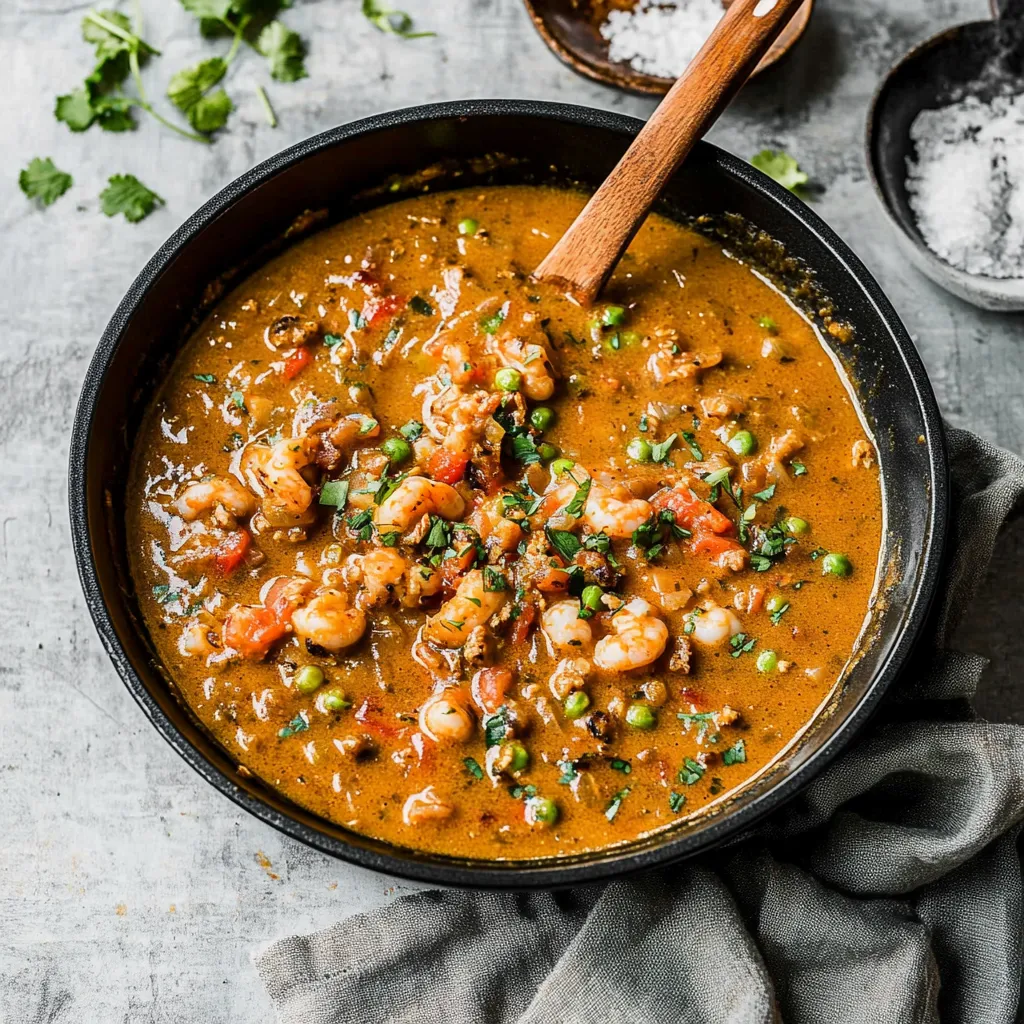 Save
Save
This classic Louisiana meal turns ordinary crawfish into a buttery, tasty delight. Every mouthful showcases perfectly seasoned tail meat swimming in a rich, amber sauce created from a slowly developed roux foundation - giving you real Cajun comfort with each spoonful.
Getting amazing étouffée depends on creating a good dark roux first. This essential beginning step builds those rich, layered flavors that make people remember this dish. Your sauce should nicely wrap around each rice grain but still let those crawfish flavors stand out.
Essential Components
- Crawfish: Freshly caught Louisiana crawfish tails, cleaned and prepped
- Butter: Premium unsalted butter for starting the roux
- Vegetables: Crisp celery, onion, and bell pepper, chopped small
- Stock: Flavorful seafood stock as your liquid base
- Seasonings: Garlic, cayenne, paprika, thyme
- Flour: Regular all-purpose flour for making roux
Preparation Approach
- Ready Your Veggies:
- Chop the holy trinity (onion, celery, pepper) into small even bits. Sauté them gently in butter until soft without getting brown.
- Create the Roux:
- Mix butter and flour together, always stirring until it turns deep amber brown. This gives you that must-have flavor and thickening power.
- Form the Sauce:
- Slowly mix in warm stock until everything's smooth. Let it bubble away to develop taste and get the right thickness.
- Put in Crawfish:
- Mix crawfish tails in carefully, warming them just enough without ruining their soft texture.

What makes étouffée special is how the thick sauce works with sweet crawfish - they should play together without one taking over.
Cooking Schedule
Pay attention to how thick your sauce gets as it cooks down. It should stick to the back of your spoon but still move easily. Your crawfish only need 3-5 minutes to warm up properly.
Serving Style
Put it over steaming long-grain rice. Top with fresh parsley and green onions for a nice color pop and fresh taste.
Different Takes
Make it as spicy as you want. You can try adding things like filé powder or extra cayenne if you want more kick, but you don't have to.
Keeping Leftovers
After cooling, keep extras for up to 3 days. Warm up slowly on your stove, adding a bit of stock if it's too thick.

This traditional Cajun creation honors Louisiana's food history while being doable in any kitchen. Just focus on good technique and fresh ingredients for the best results.
Recipe Q&A
- → What type of crawfish works best?
- Louisiana crawfish tails give you the most authentic taste. Don't bother with imports and look for packages that show local origin.
- → Is it okay to use a different stock?
- Sure thing! Seafood stock makes it taste more authentic, but chicken or vegetable stock will work fine too.
- → How do I know if my roux is ready?
- When your roux looks like peanut butter and smells nutty, it's good to go. Just keep an eye on it so it doesn't burn.
- → Can I prep this in advance?
- For sure! Make it ahead when you've got time. You can keep it frozen for up to three months or just warm it up later.
- → How's Cajun étouffée distinct from Creole?
- The main difference is that Cajun versions don't use tomatoes at all, while Creole cooking adds tomatoes or tomato paste for a different flavor profile.
